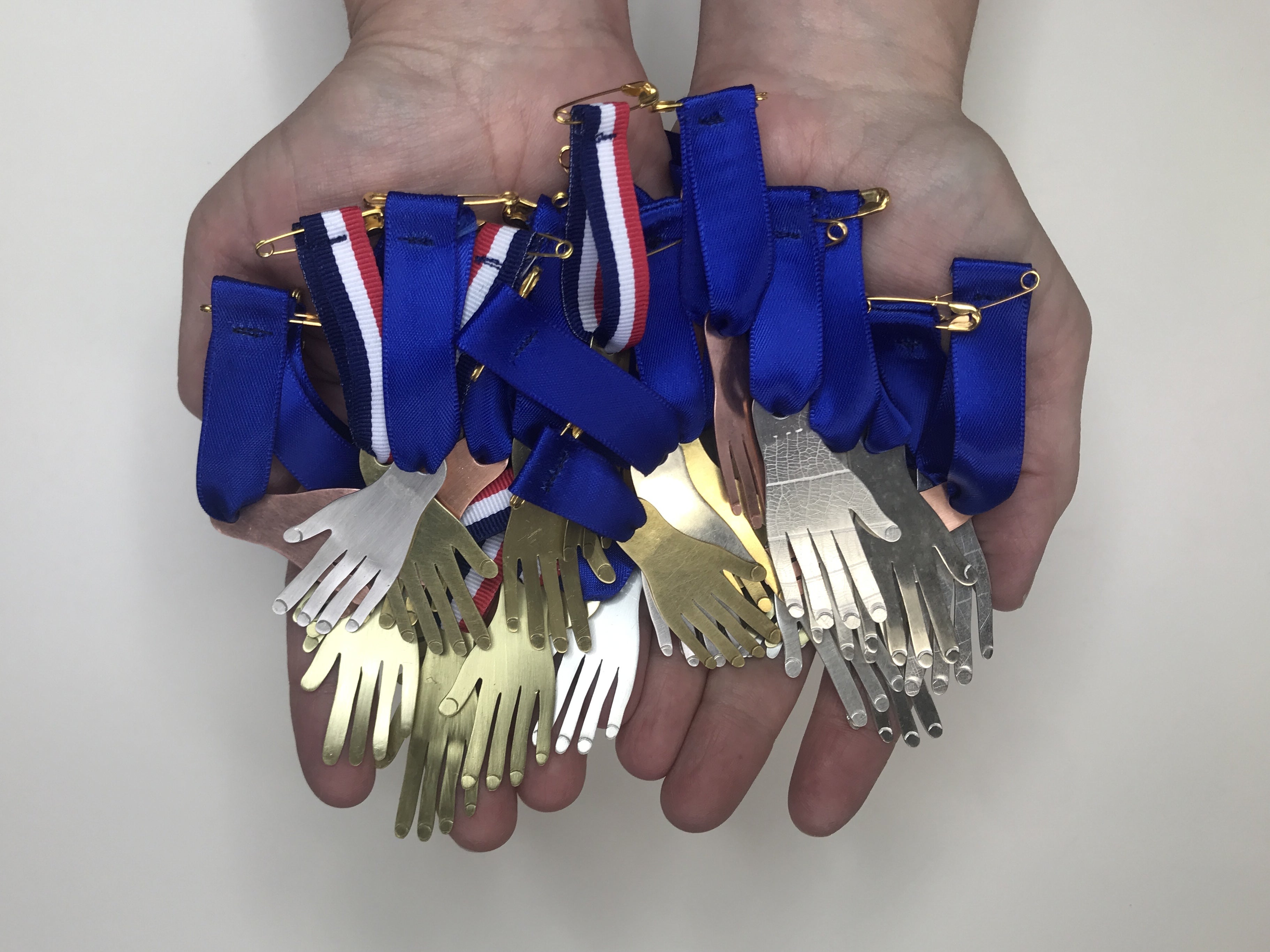
The international Hand Medal Project has a simple goal: enlisting artists to make hand-shaped medals to honor the service and sacrifice of health workers during the pandemic.
Anika Smulovitz, a professor of art jewelry and metalsmithing in the Department of Art, Design and Visual Studies, gathered a local team including herself, two students and four alumni to make 80 metal hand medals for the project.
Smulovitz said she wants all focus for the project to be not on the artists (though they created their pieces in a mere two weeks) but on the frontline healthcare workers “who have risked everything to care for their communities during the pandemic.”
“We are forever grateful for the challenging work our frontline healthcare workers are doing, and as jewelers, this is one small way we can express our gratitude,” she said.
Project organizers, artists Iris Eichenberg and Jimena Ríos, created a network of what they call “Hand Keepers,” 145 people who collected the medals from individuals across 66 participating countries. Hand Keepers passed the medals (some 70,000 of them) to “Hand Givers,” who presented them to their local medical communities. St. Luke’s in Boise was the local Hand Giver. The hospital gave the medals to its respiratory therapists in November.
One of them, Niki Howard, posted a photograph of her stethoscope, ID tag and shining hand medal on Smulovitz’s Facebook page.
“Thank you!!!” wrote Howard. “So much gratitude for you and the work that you are doing!”
Each medal has been registered with a number stamped on the back, allowing recipients to look up the maker of their medal on the project’s website. Participants made their hand medals using a uniform template. The design, said organizers, was meant to be simple enough for all skill levels and suitable for whatever metal was available.
Eichenberg and Ríos wrote, “Unlike a war, our current battle with coronavirus is fought with an enemy invisible to the naked eye, its specter made all the more ominous by its intangibility—a danger you cannot see. By contrast, metal, especially jewelry, is known by its weight and shape against the body. When formed into a medal, it provides a physical testimony for both the unseen virus and invisible bravery of those who have fought it.”
Follow the Hand Medal Project on Instagram @handmedalproject.
Read the St. Luke’s story about the donation on the St Luke’s website.